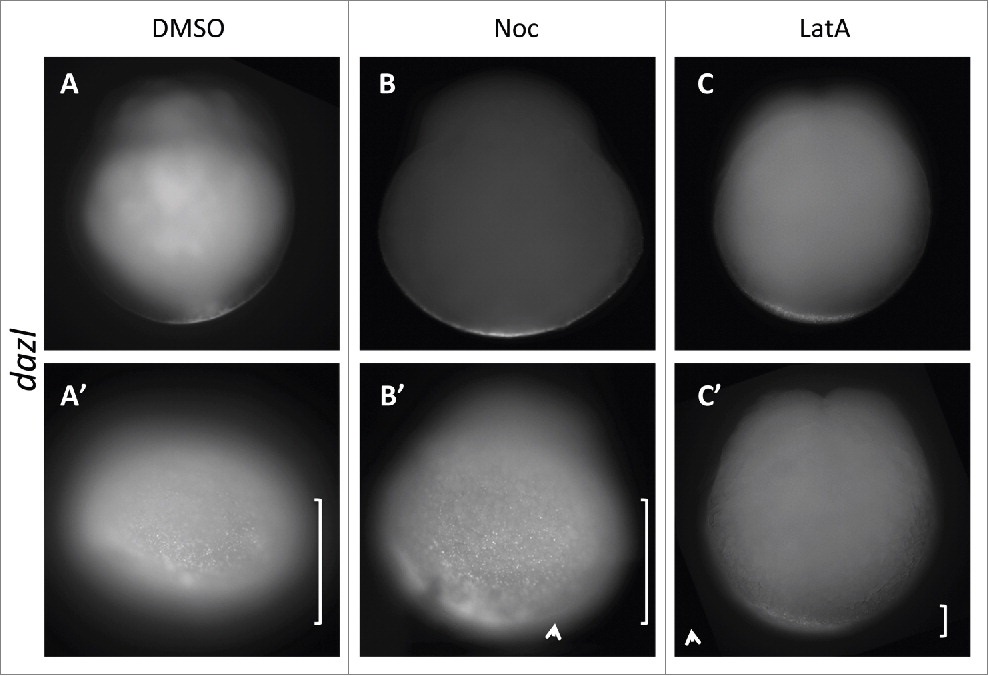Fig. 5
Cortical depth and cytoskeletal-based movements involved in axis induction and germ cell determination in the zebrafish. Top two rows present a magnified view of the vegetal cortex, whereas the bottom 2 rows present embryo overviews. In the activated egg, RNAs for both dorsal-inducing factors and germ line determinants are localized to the vegetal pole at different cortical depths. Upon fertilization, microtubules become aligned into parallel bundles and mediate the off-center movement of outer cortex components with respect to the central core (green short arrow). The differential cortical depth of dorsal (wnt8a, grip2a, in the outer cortex) and germ line (dazl, in a more internal layer) RNAs is coupled to this cortical movement and together these processes contribute to a differential transport: dorsal factor RNAs are transported to generate an early, short-range asymmetry, whereas germ line RNAs remain in a symmetric pattern. Three situations concerning the vegetal cortex microtubule (MT) array reorganization at 20 mpf are presented: normal array formation in the left column, and abnormal reorganization (as in hecate/grip2a mutants) or microtubule inhibition (nocodazole-treated embryos) in the right column. Long arrows in the bottom row represent the subsequent paths of long-range factor movement by general transport mechanisms: F-actin-dependent transport of germ cell factors in more internal layers (red arrows) and microtubule-dependent transport of dorsal factors in the outermost cortex (green long arrows). Stippled arrows represent long-range transport system that are competent but nevertheless do not contribute to actual factor transport due to the spatial factor distribution resulting from upstream events in the pathway.

